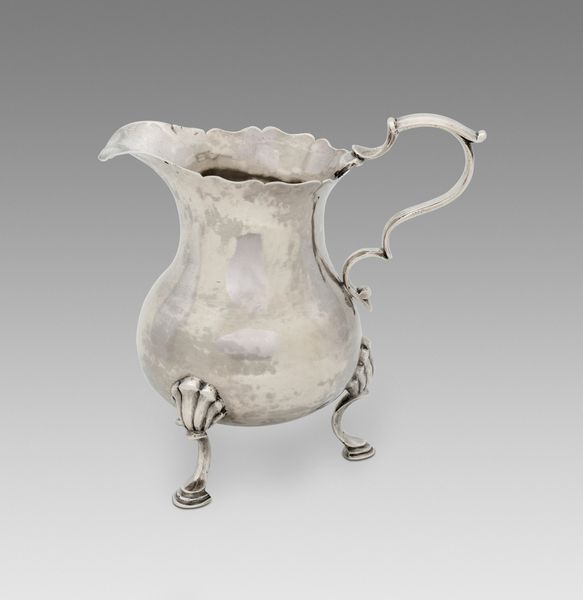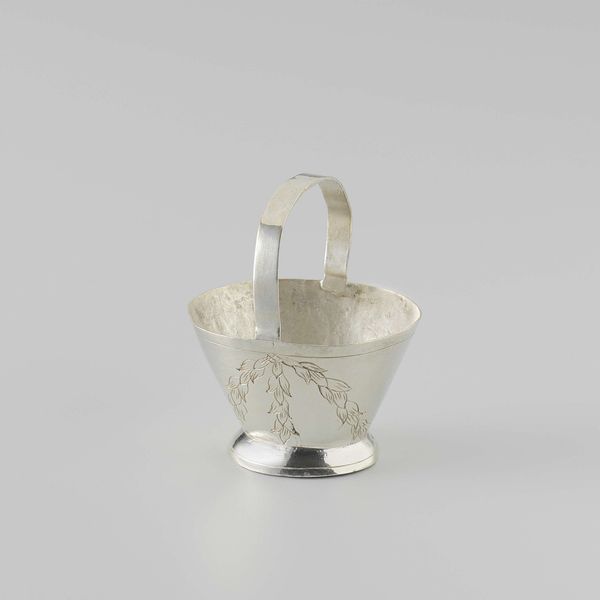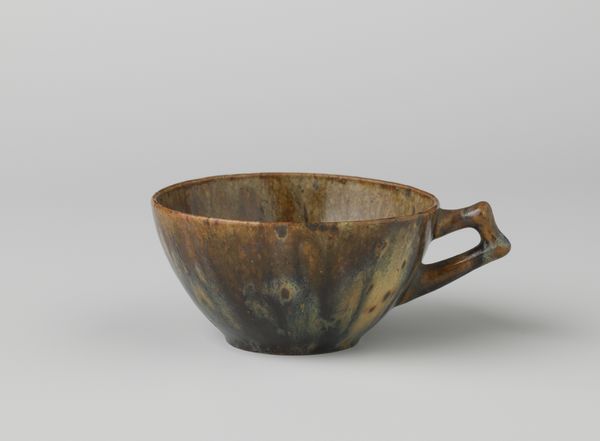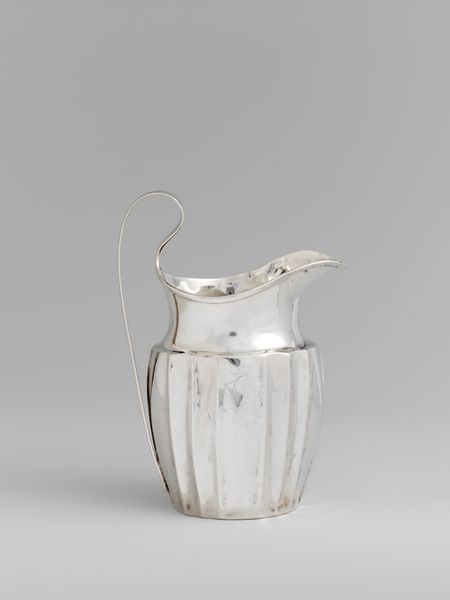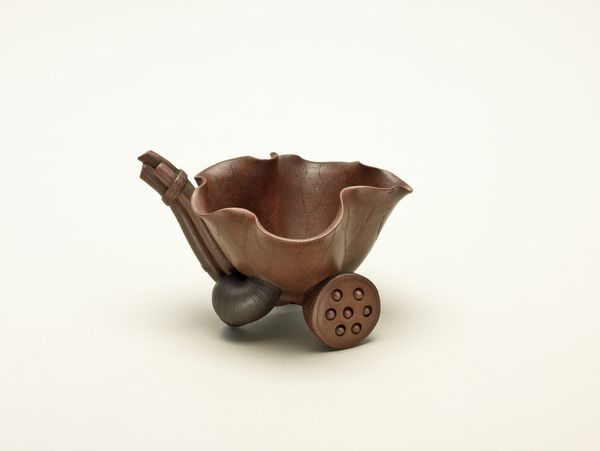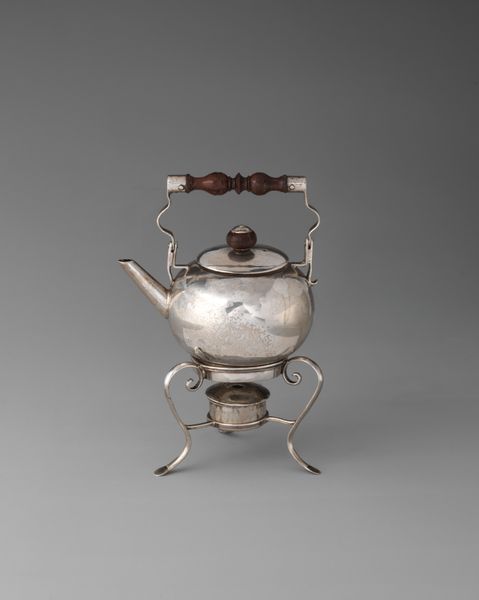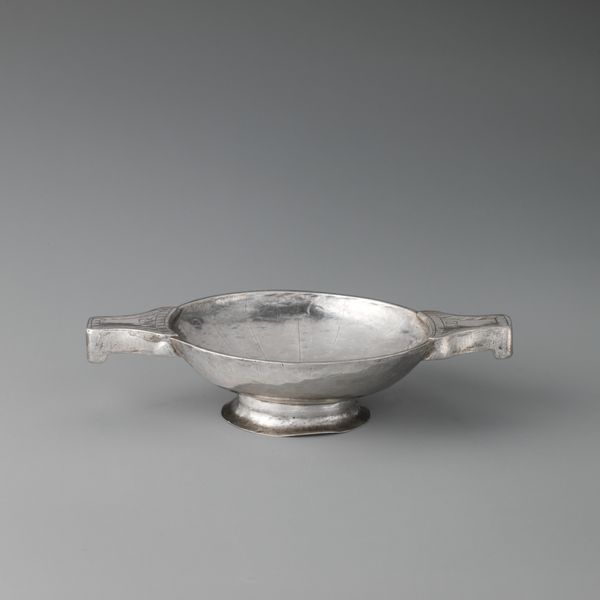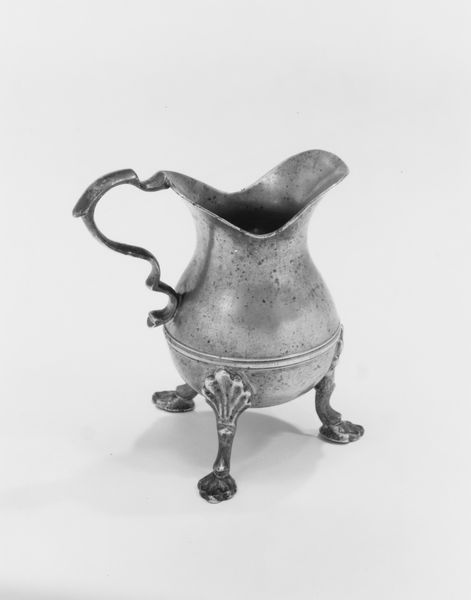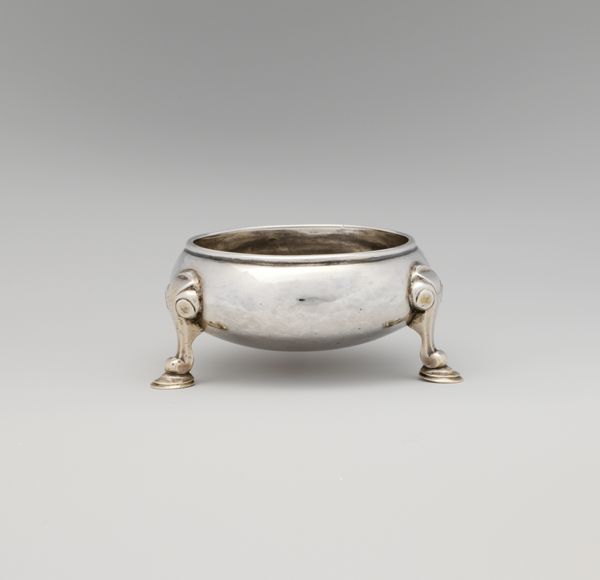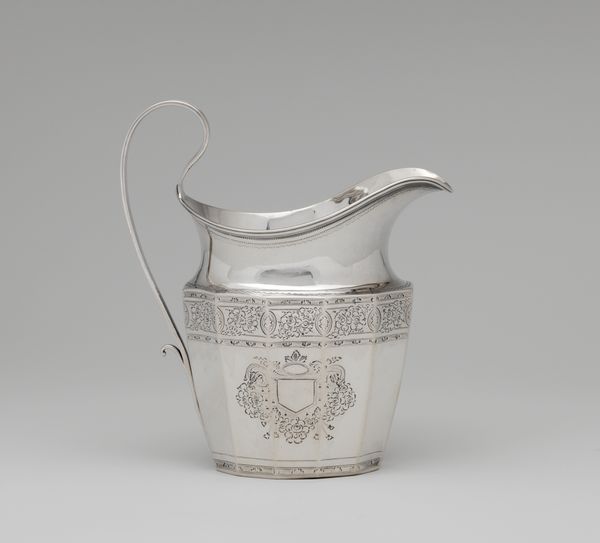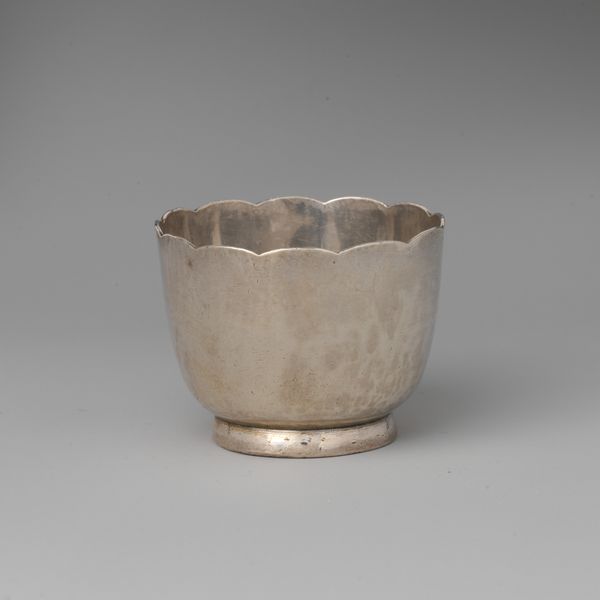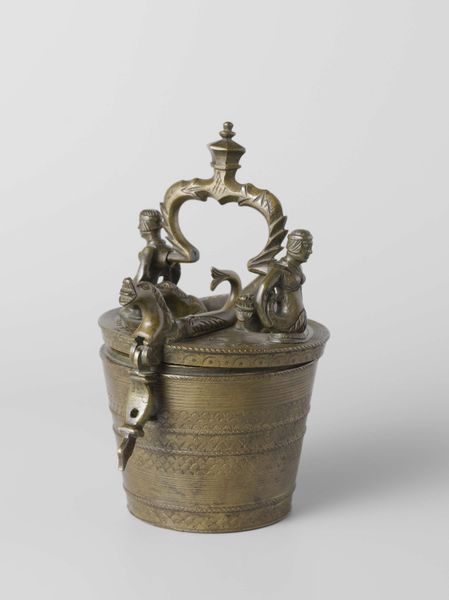
Roomkan van zilver op drie gebogen pootjes met uitwaaierend motief dat wordt voortgezet in de gedreven decoratie op de wand. Brede tuit en S-vormig gebogen oor. 1751
0:00
0:00
silver, metal
#
silver
#
baroque
#
metal
#
decorative-art
Dimensions: height 6.6 cm, length 11.5 cm, width 6.9 cm, weight 77.0 gr
Copyright: Rijks Museum: Open Domain
Walter Brind crafted this silver sauce boat, its floral motifs and elegant curves speaking volumes about its place in 18th-century Dutch society. In a time defined by burgeoning global trade and increasing social stratification, objects like this sauce boat played a crucial role in symbolizing status. Silverware, with its inherent material value and the artistry required for its creation, was a clear marker of wealth. The delicate floral patterns, chased into the silver, reflect the era’s fascination with the natural world, itself a domain of aristocratic leisure and scientific inquiry. The sauce boat wasn't merely functional; it was a carefully crafted artifact meant to be displayed and admired. Silver was often commissioned from silversmiths who belonged to powerful guilds. The study of guild records and family archives could reveal much about the networks of patronage and artistic exchange that shaped its production. By understanding the social life of objects like this, we gain insights into the values, beliefs, and power structures of the past.
Comments
No comments
Be the first to comment and join the conversation on the ultimate creative platform.
